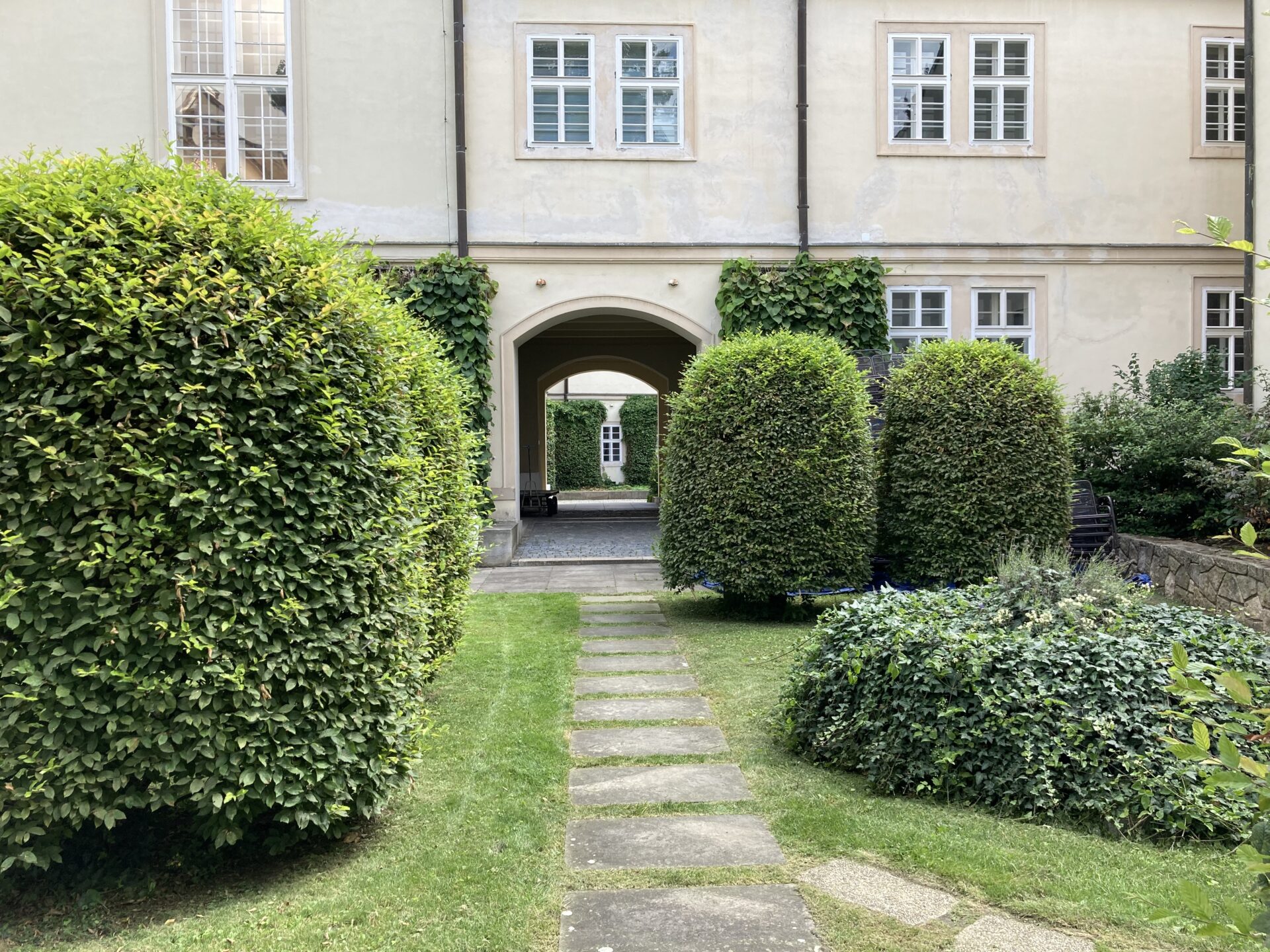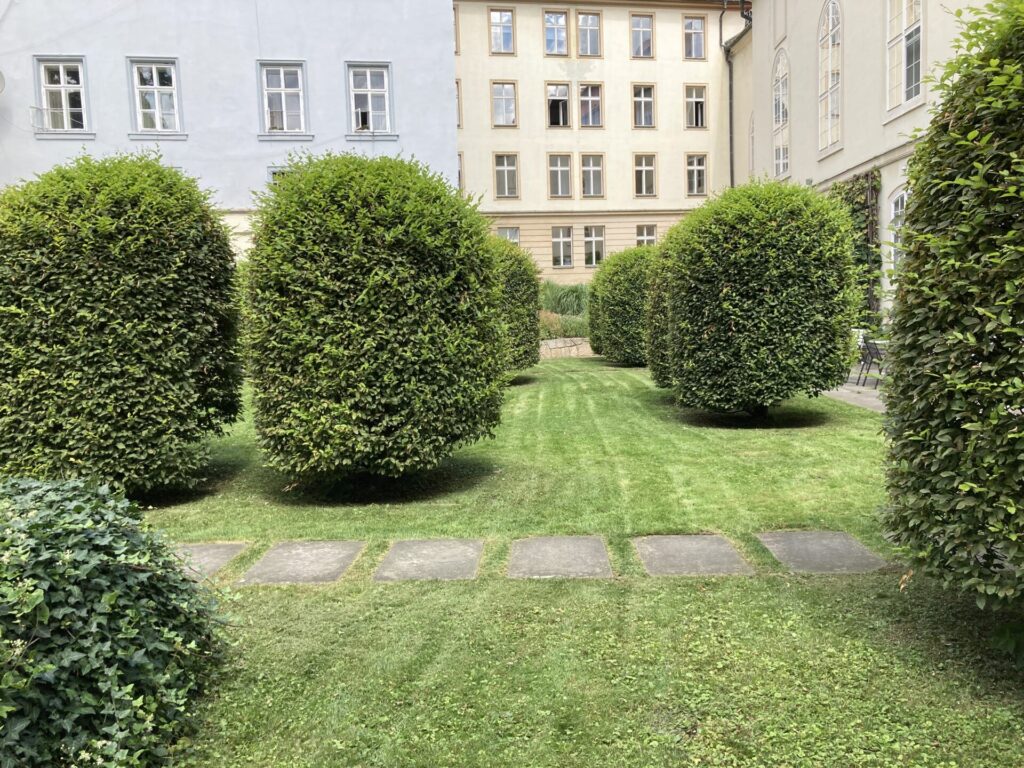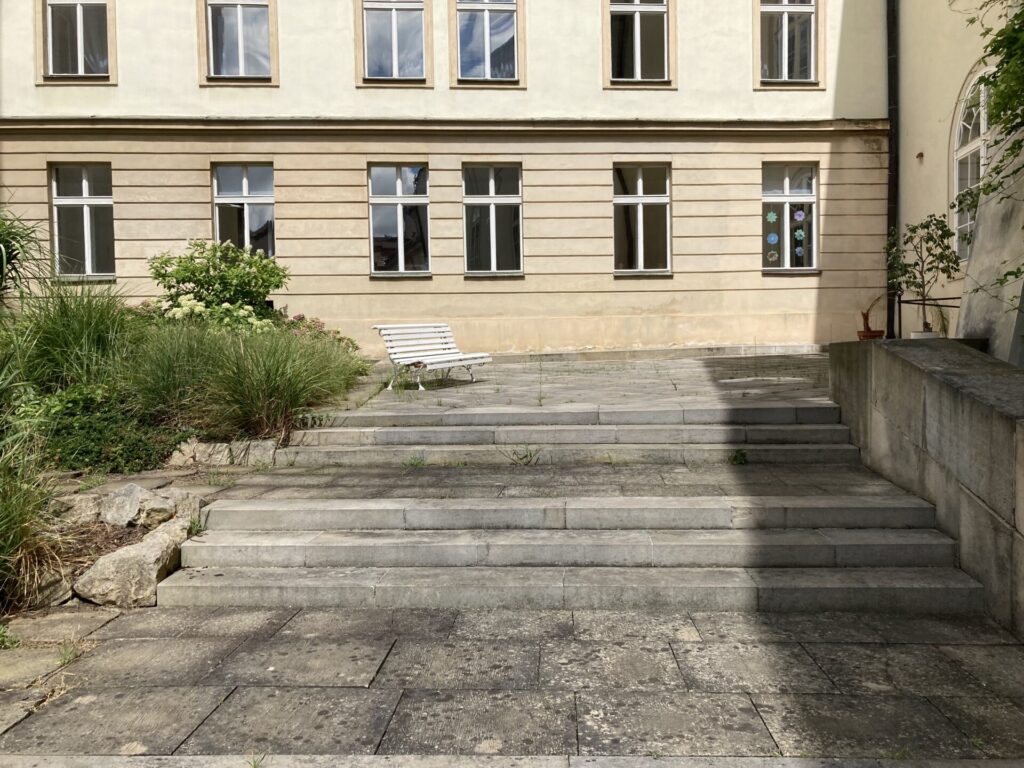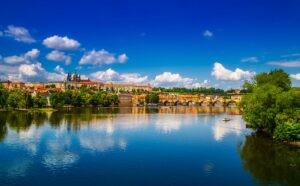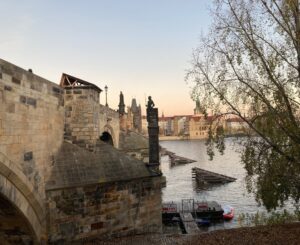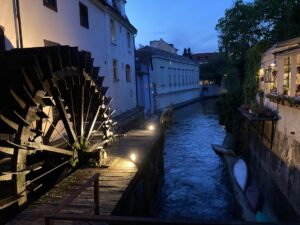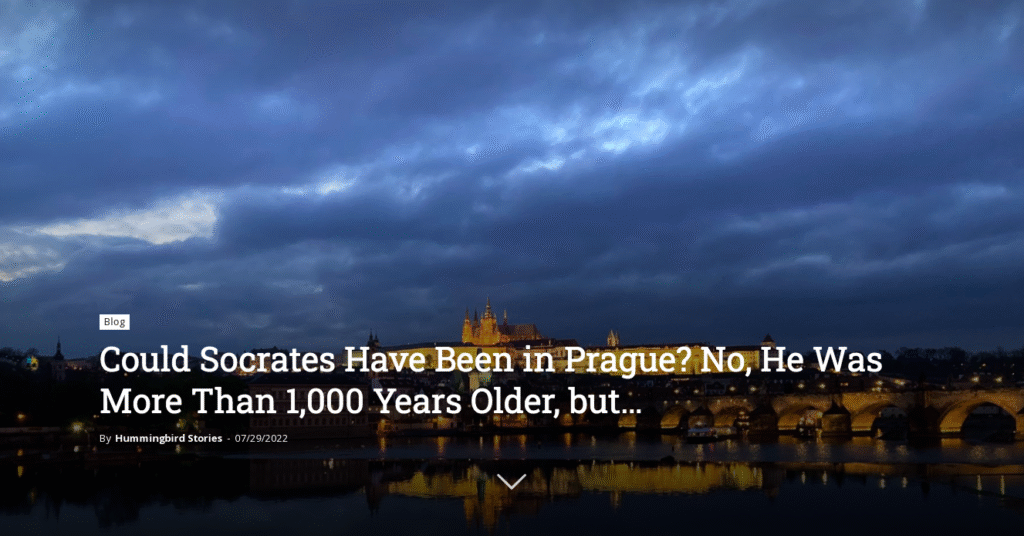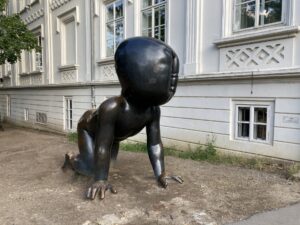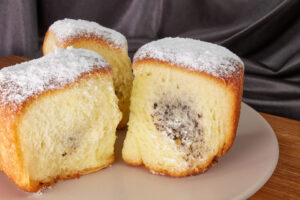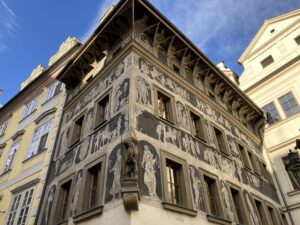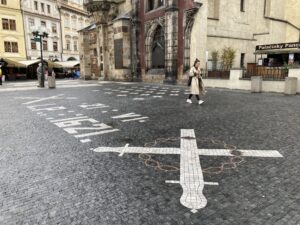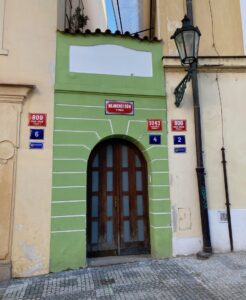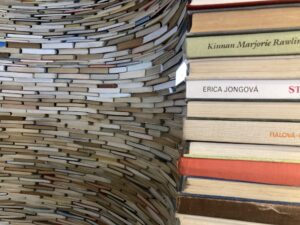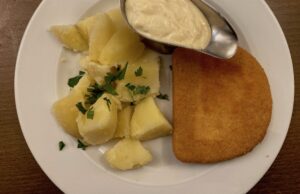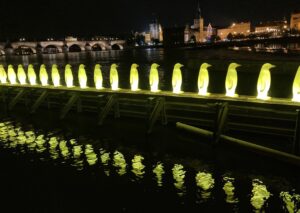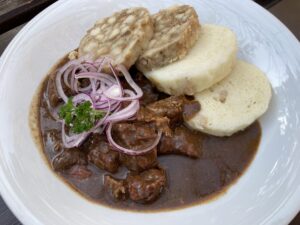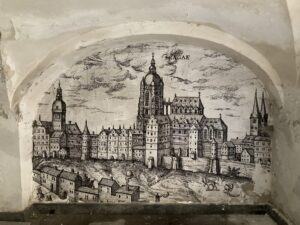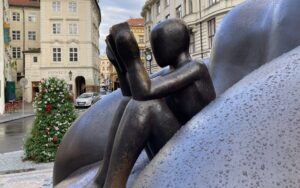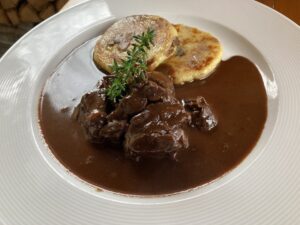Oasis in the Beating Heart of the City
If you walk down Nerudova Street from the Castle and turn right onto Lesser Town Square, you will see the landmark of St. Nicholas Church on your left. On the right side is the sidewalk along a blue-and-white striped building, which takes up the entire western side of the square. You can’t help but notice a row of 27 metal posts with different headers at the edge of the sidewalk. Both are very closely related.
The blue and white building is the Liechtenstein Palace. Today it is the residence of the Music and Dance Faculty of the Academy of Performing Arts (AMU). The palace is connected to the neighboring Hartig Palace, where the management of the entire school resides, which, in addition to the music and dance faculty, also has theater and film faculties.
The Liechtenstein Palace is thus a “house full of muses.” It has two concert halls – the Bohuslav Martinů Hall, with a capacity of 200 people, and the Gallery Hall for 130 people. Both halls are mainly used for organizing graduation concerts and more intimate events. In the basement of the palace, there is also the Inspiration Theatre, an intimate scene (the theater’s capacity is 45 seats) for students from the Faculty of Music and Dance.
Entering the palace gates and passing through the passage will take you back to your student years and memories of lunches in the cafeteria.
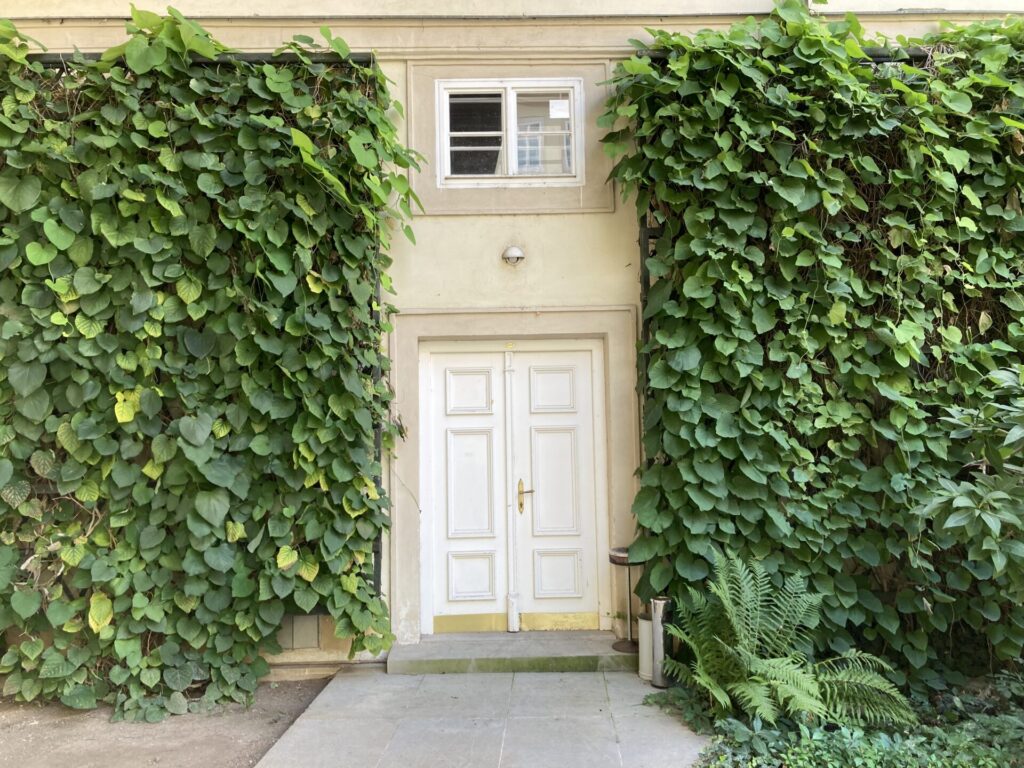
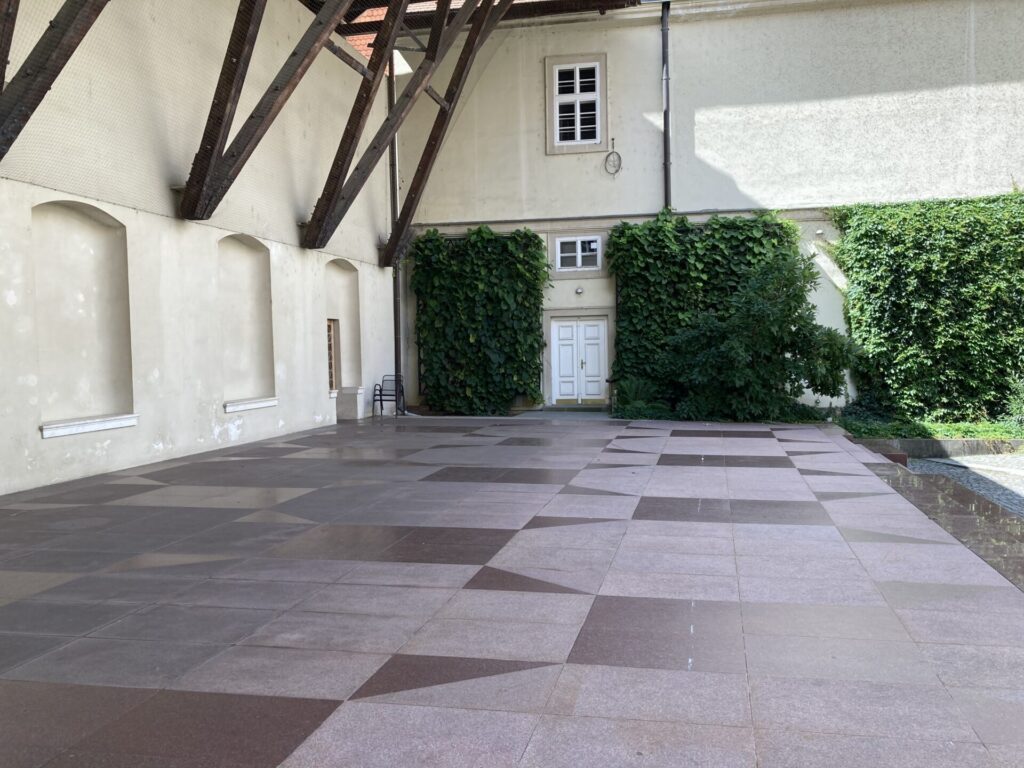
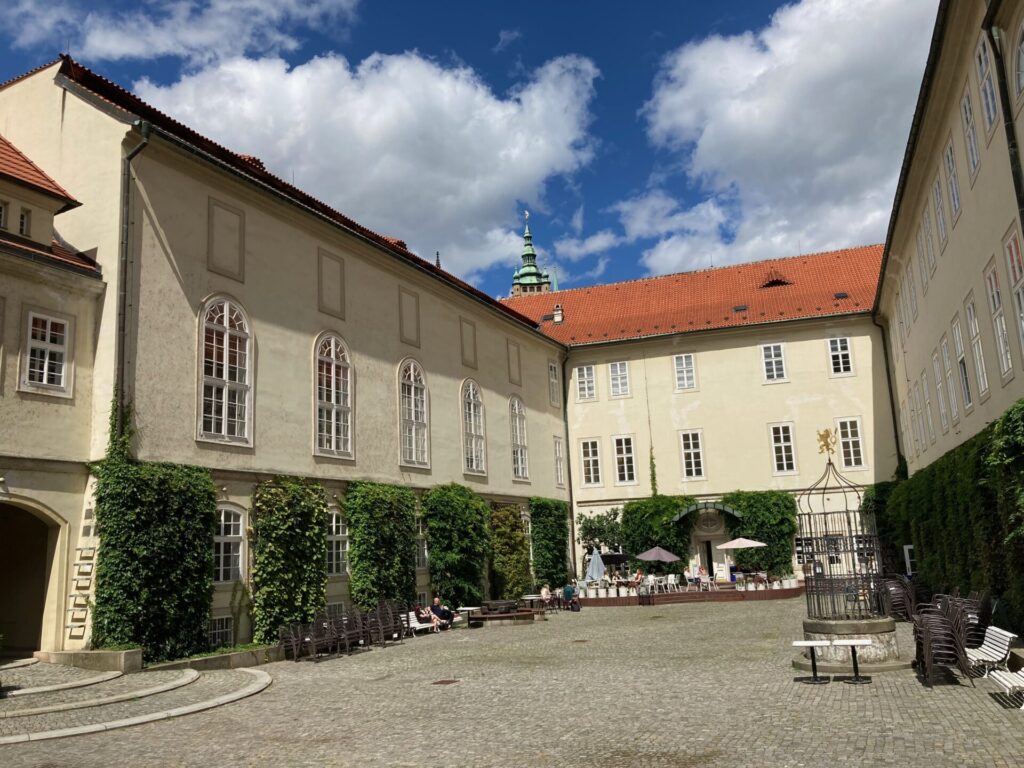
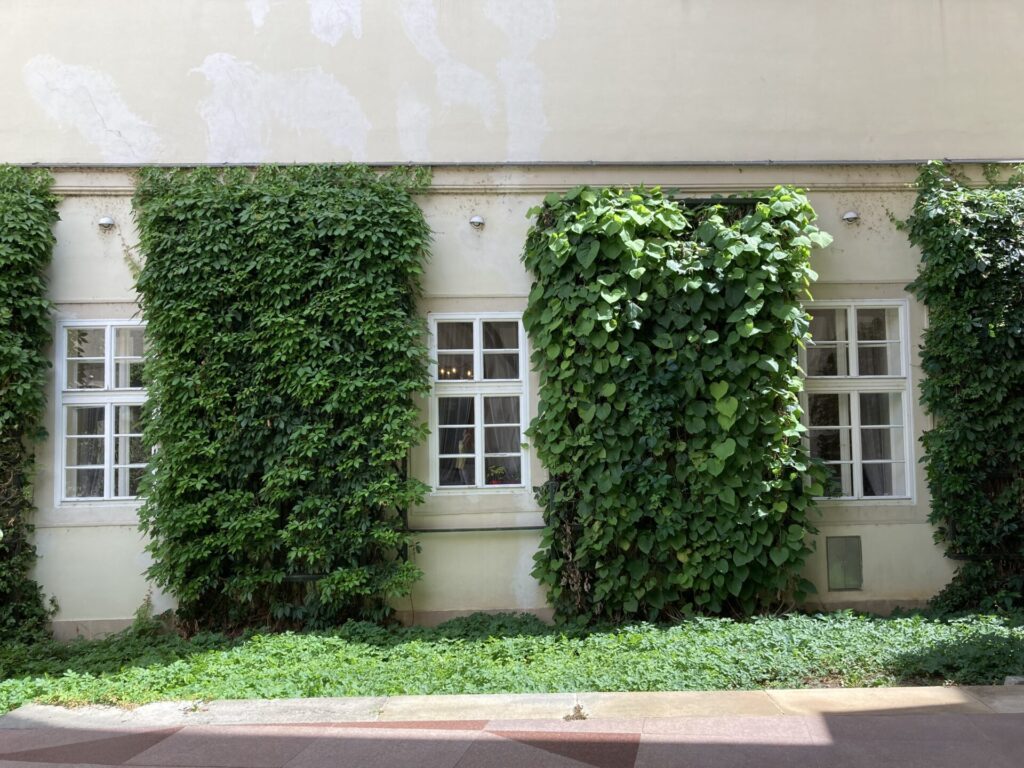
Here you’ll find Café HAMU, a cafeteria for students and staff of the faculty. They have their places reserved until 1pm; then anyone can go there for lunch.
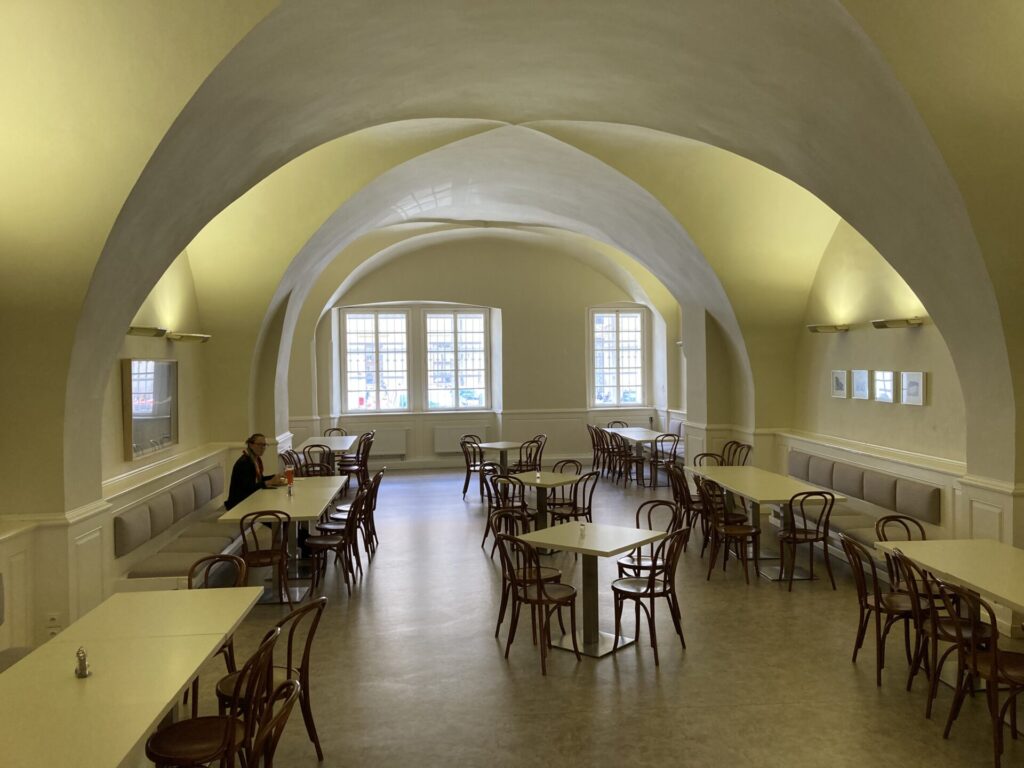
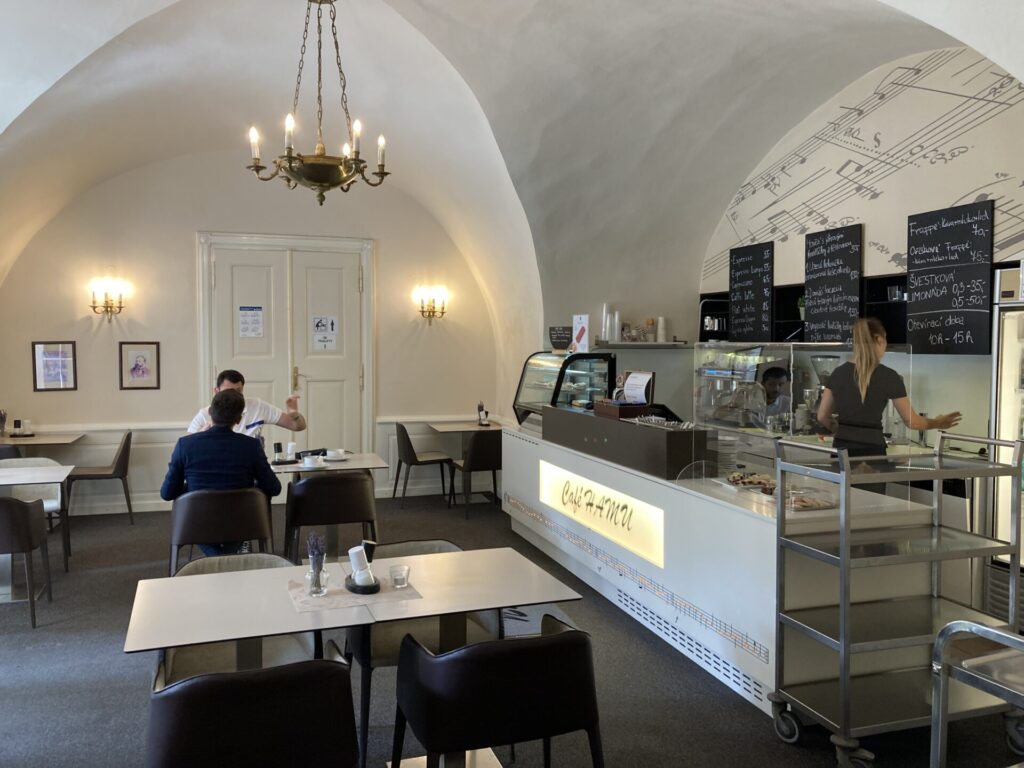
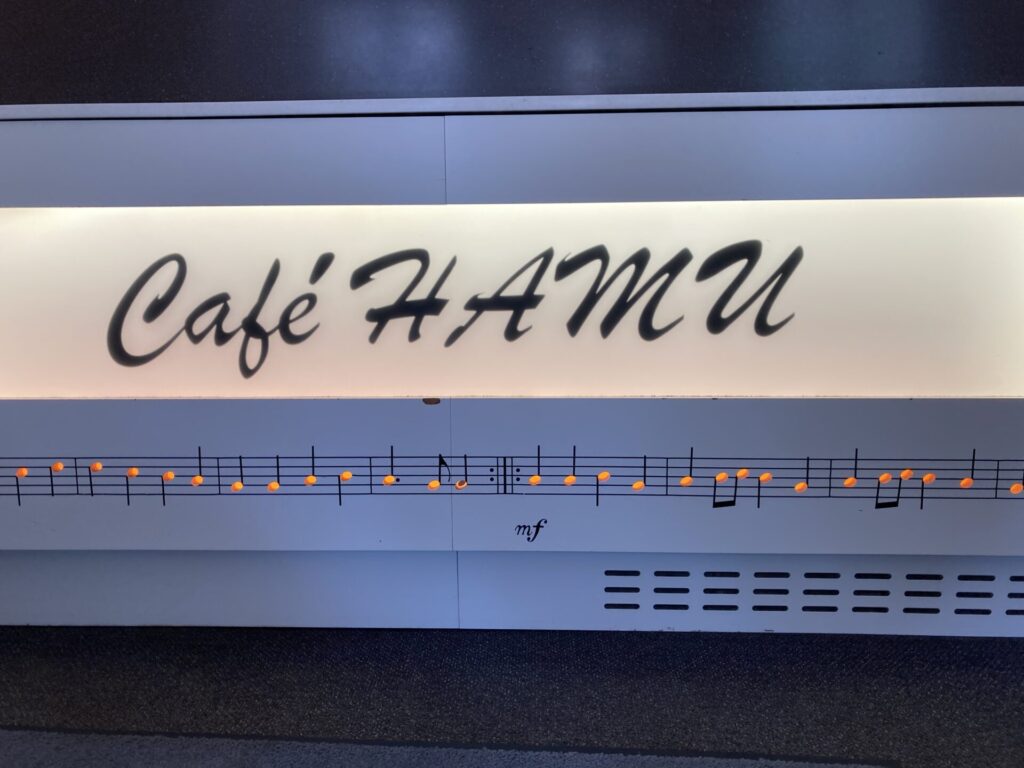
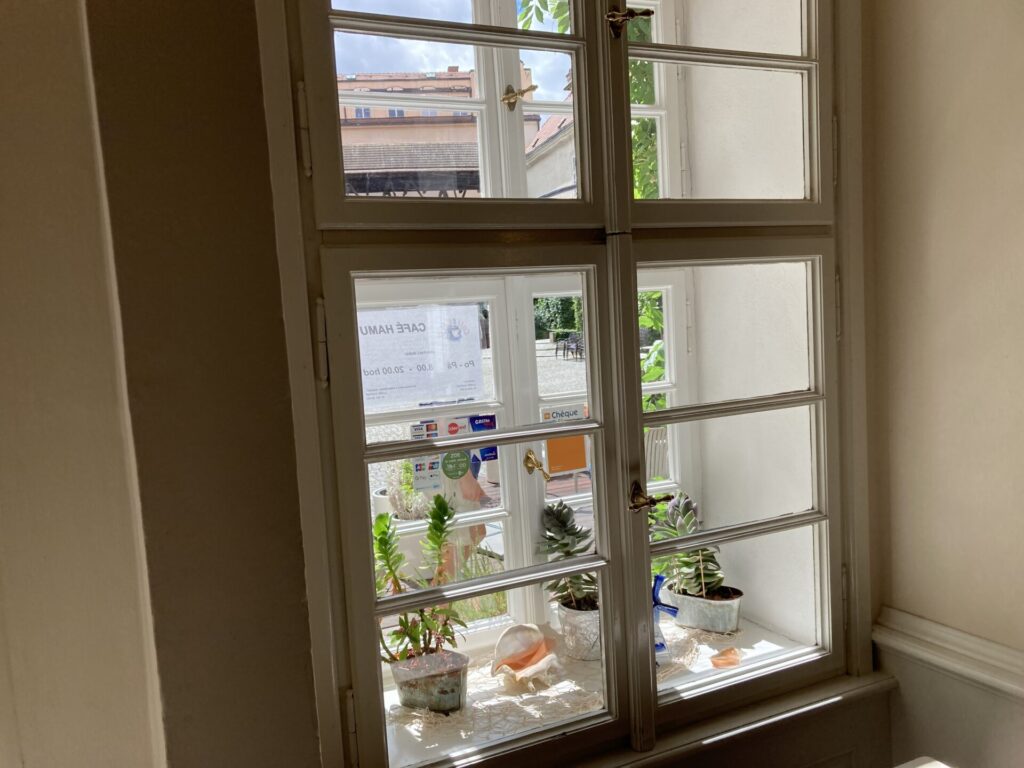
When you cross the courtyard and go through another passage, you will find yourself in the Meditation Garden of AMU, which confirms the café’s slogan: Café HAMU – Oasis in the Beating Heart of the City.

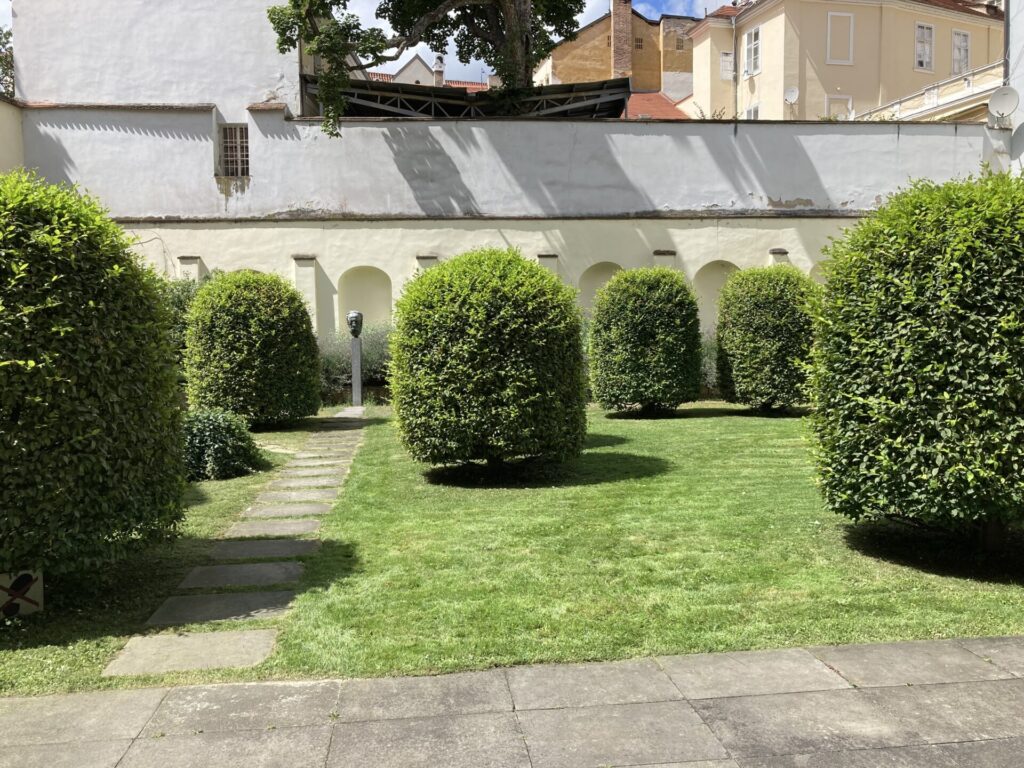
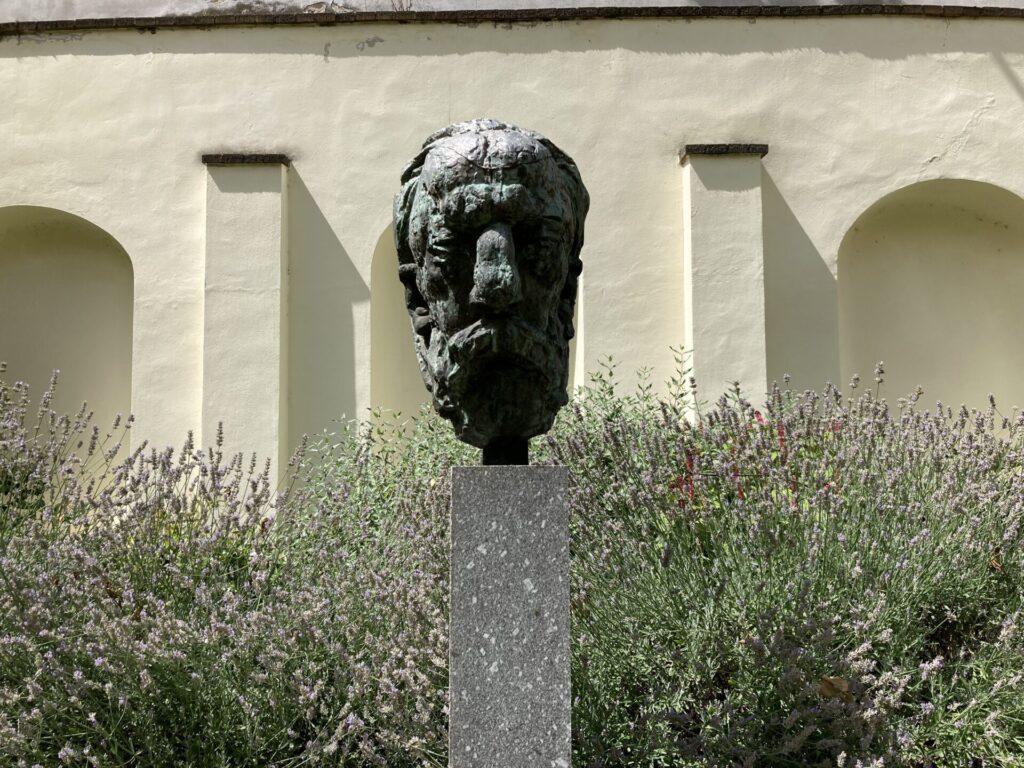
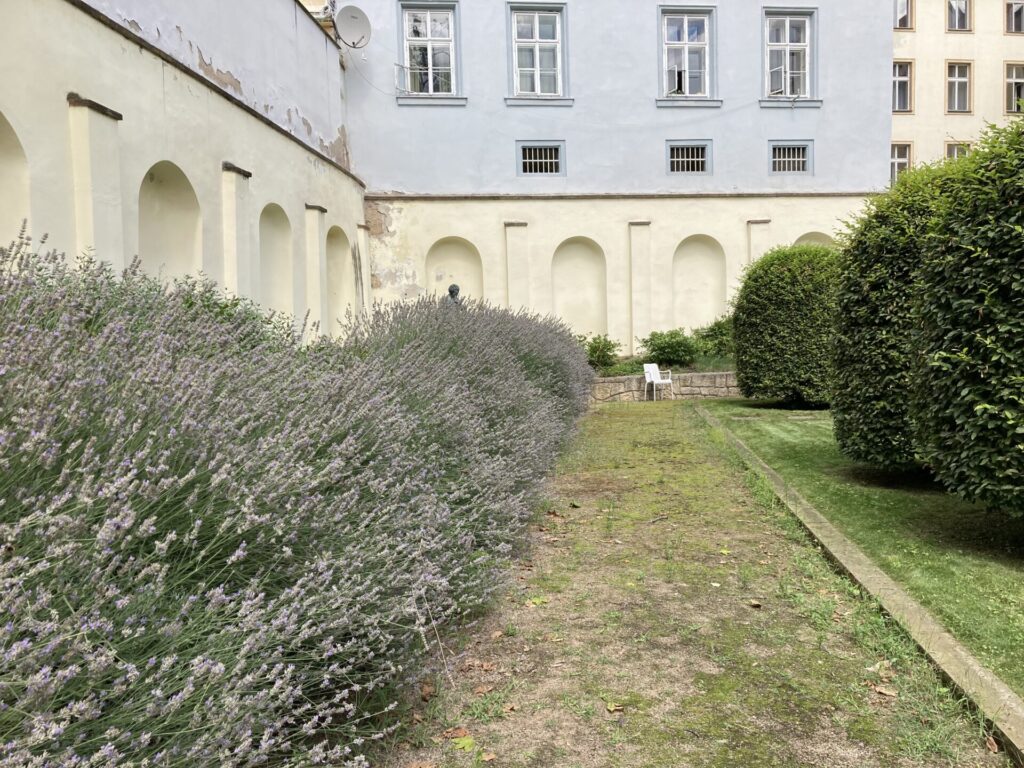
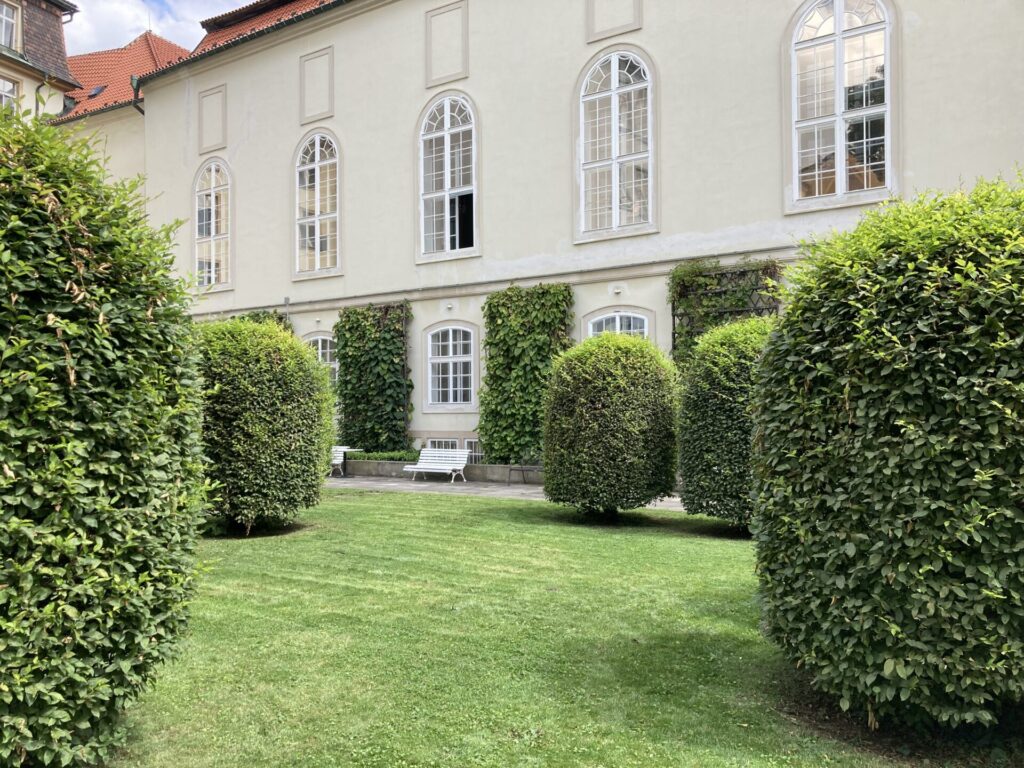
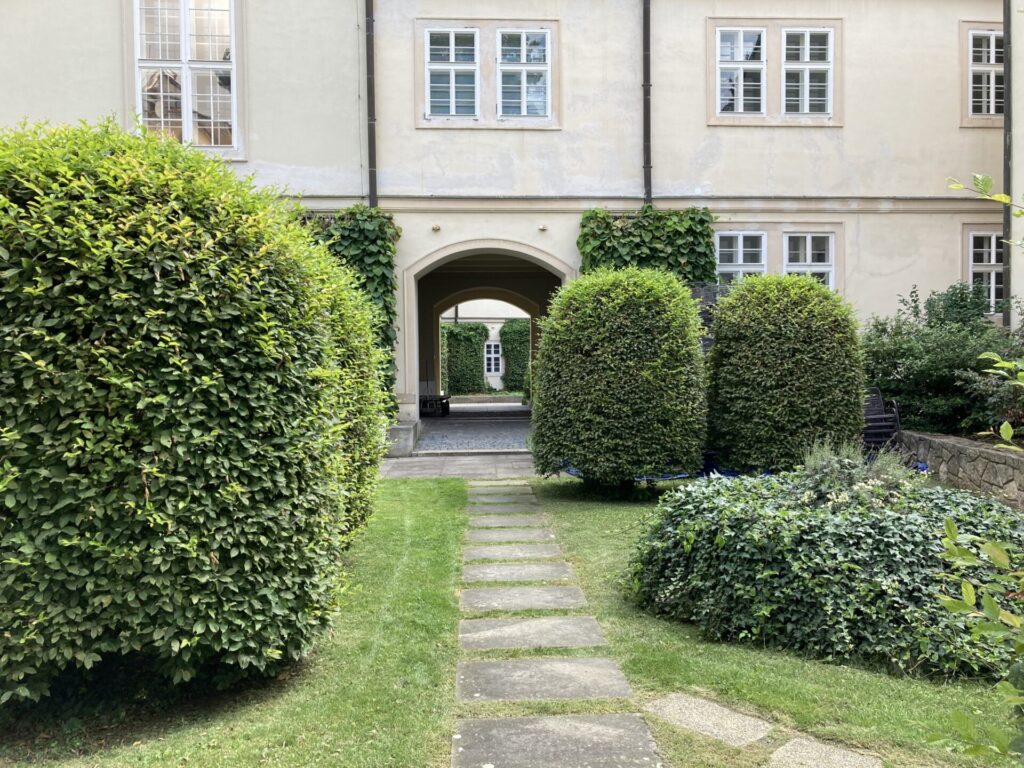
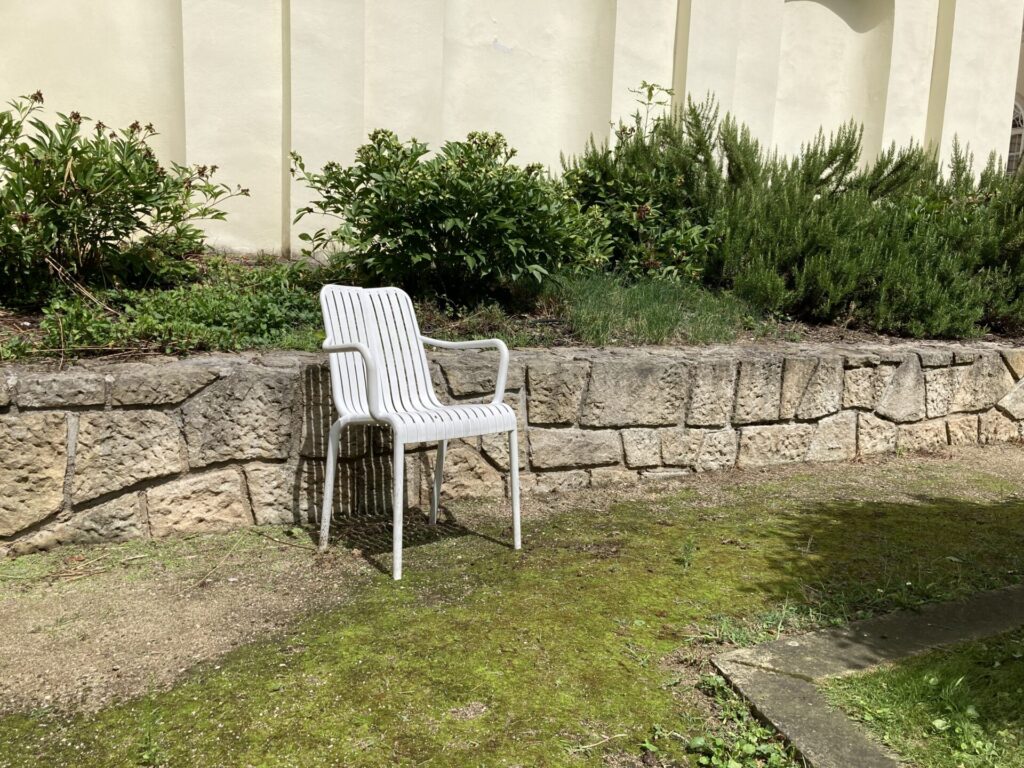
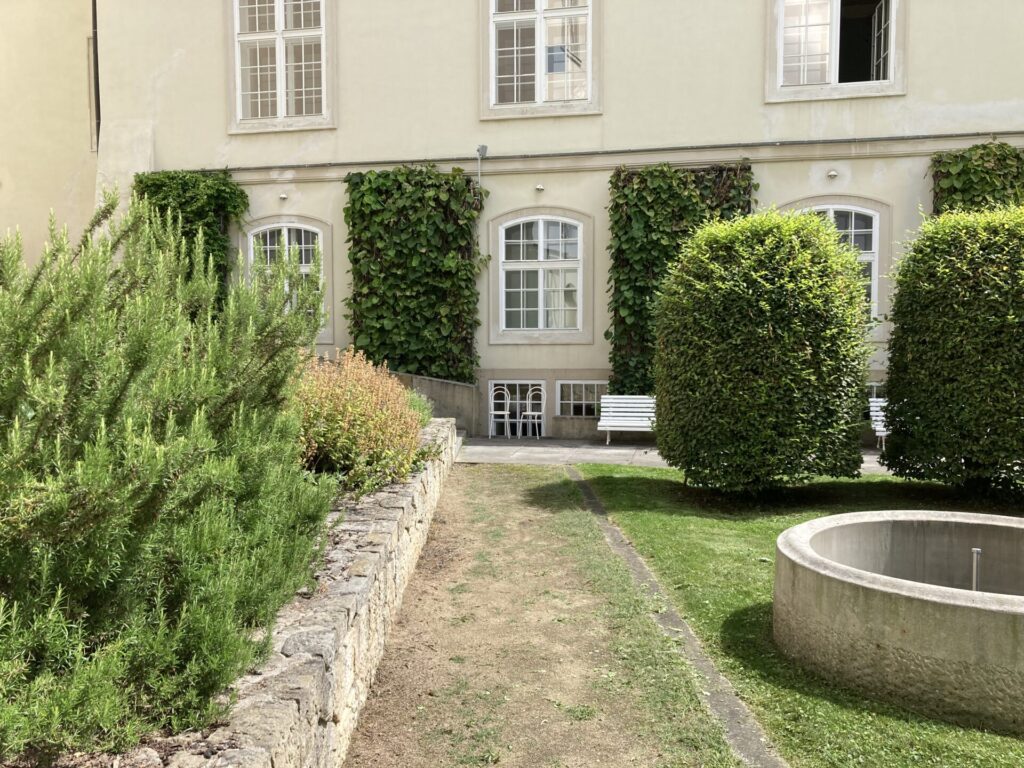
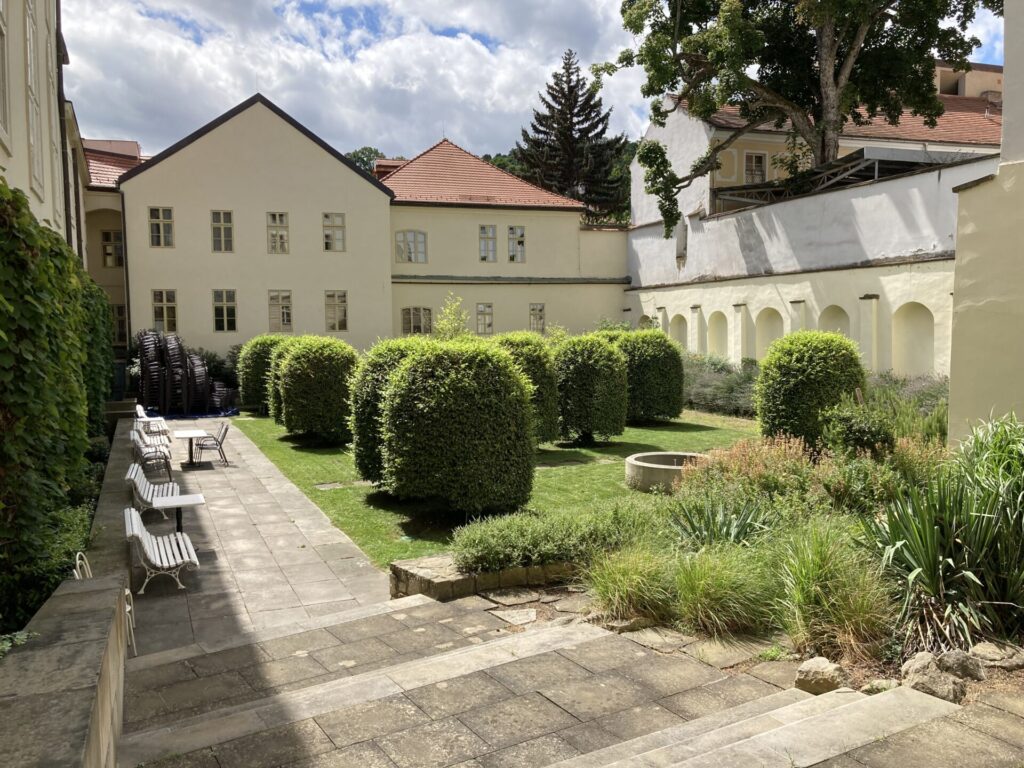
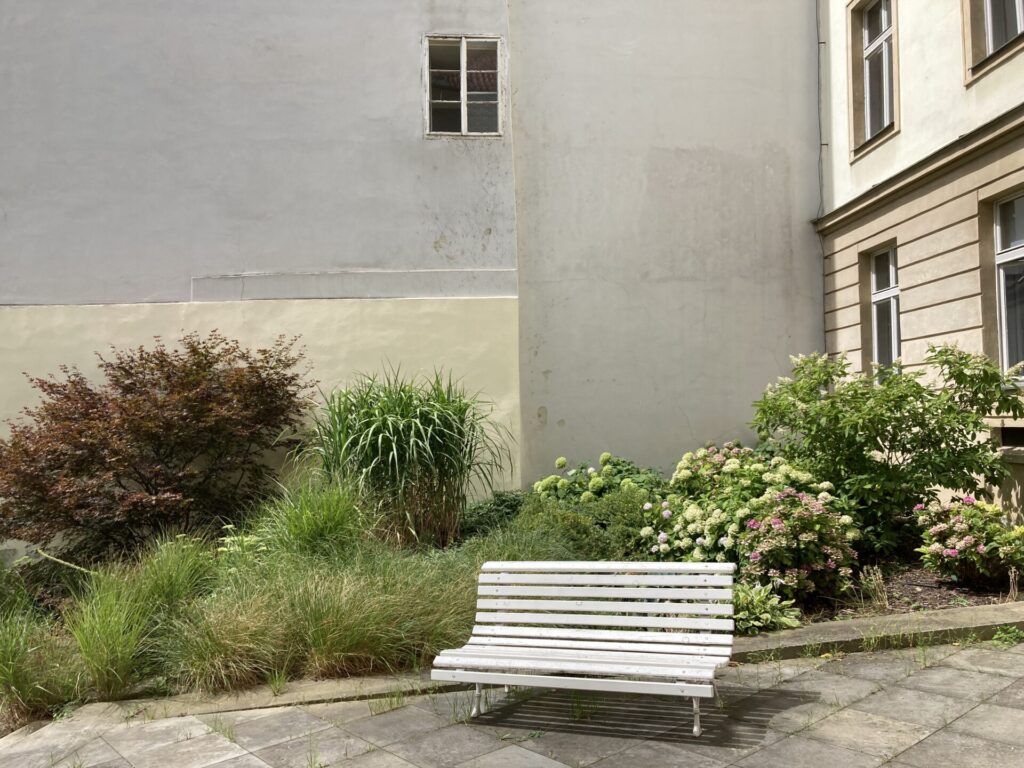
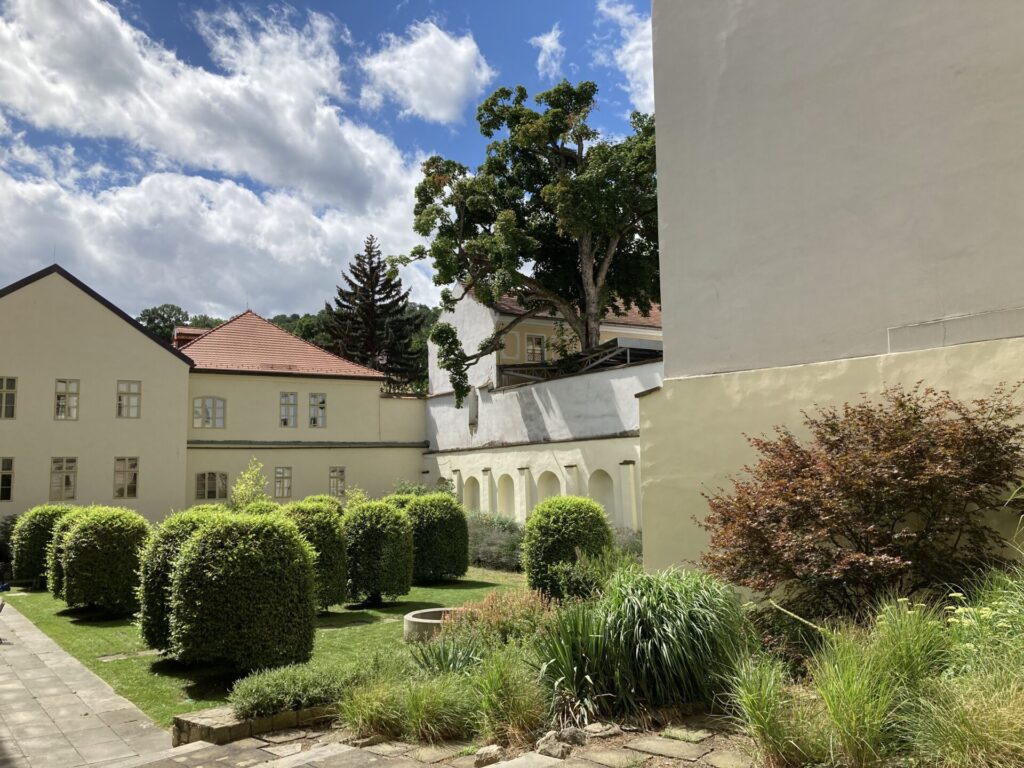
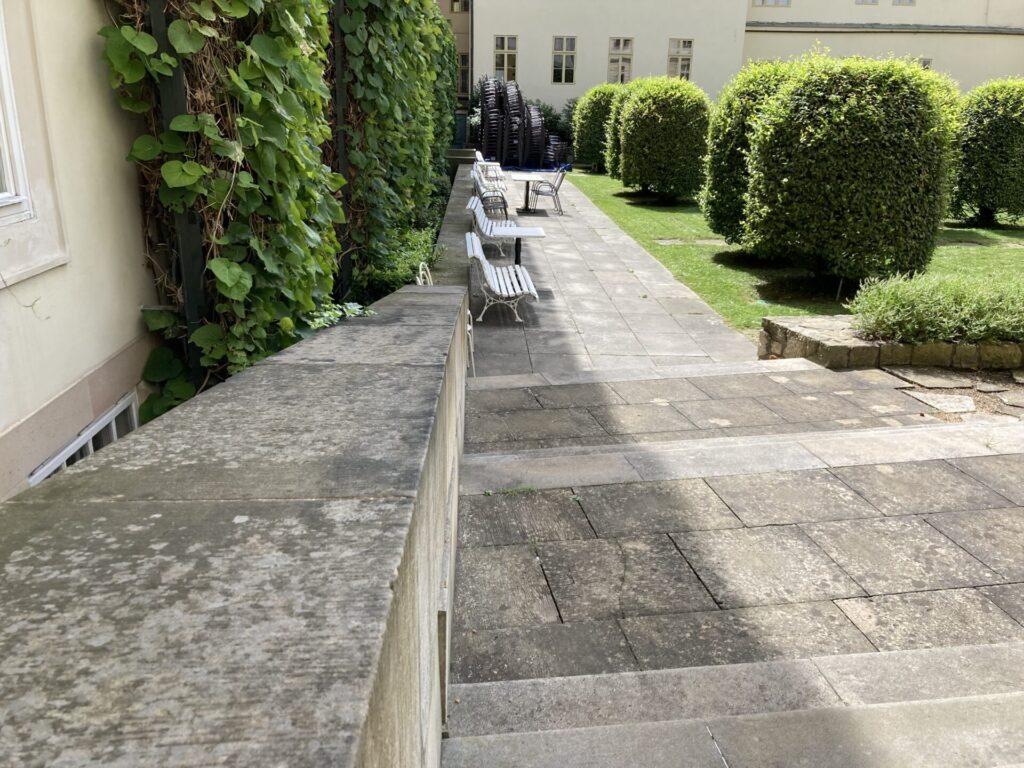
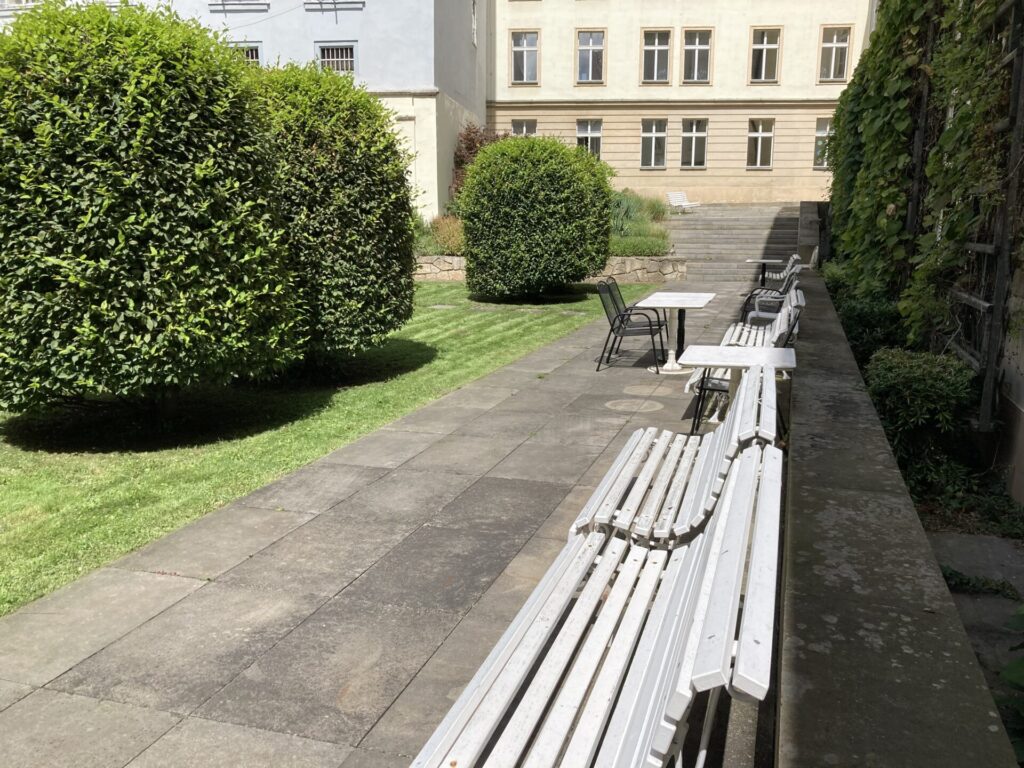
The back part of the house of number 3 Nerudova Street looks thoughtfully into the Meditation Garden. The house has a cute name – U kominíčka (At the Small Chimney Sweep). The house is originally Gothic (the first mention dates back to the beginning of the 15th century), and its cellars have been preserved from that time. Later on, the house was rebuilt many times in different building styles, including Renaissance.
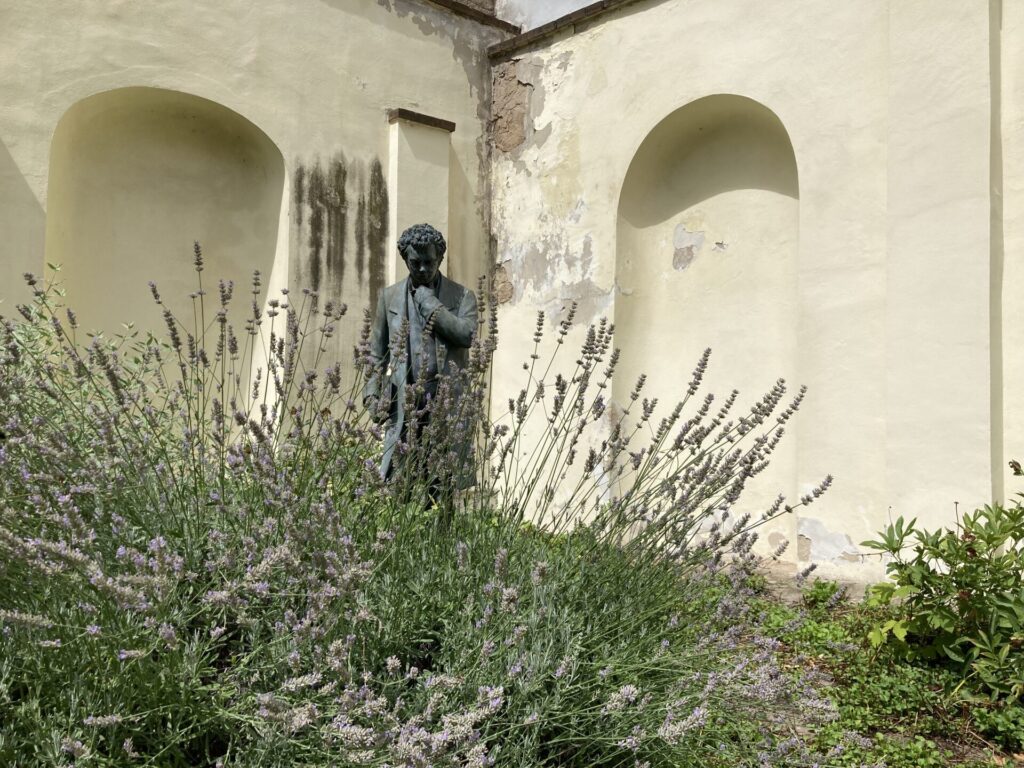
27 Columns for 27 Executed Lords
The Liechtenstein Palace is named after Charles I of Liechtenstein, who Emperor Ferdinand II appointed as the Czech royal ruler after the Battle of White Mountain. This position was the highest ranking civil servant, and entrusted him with the investigation and punishment of the leaders of the Estates Uprising.
The execution list initially recommended 51 executions. Later, only half of the convicts were on it. And although common knowledge speaks of 27 executed nobles, only 3 of them existed. Of the other people on the list were 7 knights and 17 burghers. The 28th was Martin Fruewein, who took his own life by jumping into the Stag Moat. That is why you’ll actually find 28 crosses on the Old Town Square, which was the place of execution.
The memory of the 27 executed is commemorated by the metal columns, which are the work of the sculptor Karel Nepraš. Each pillar is different. Their heads are a stylized portrayal of the executed men.
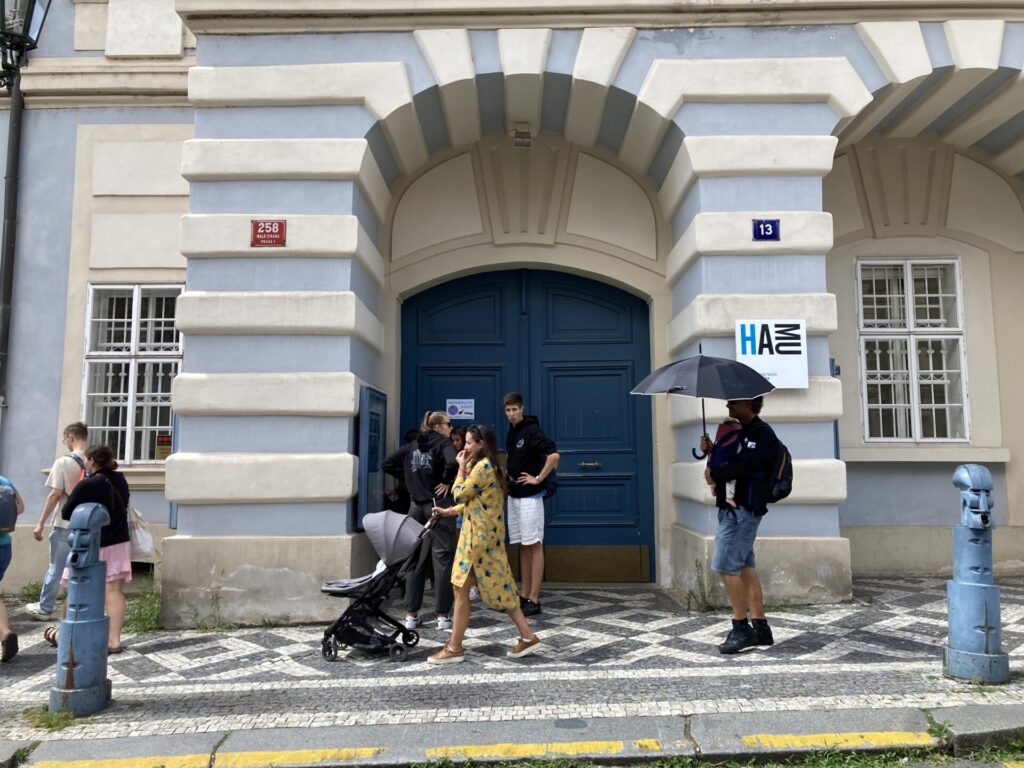
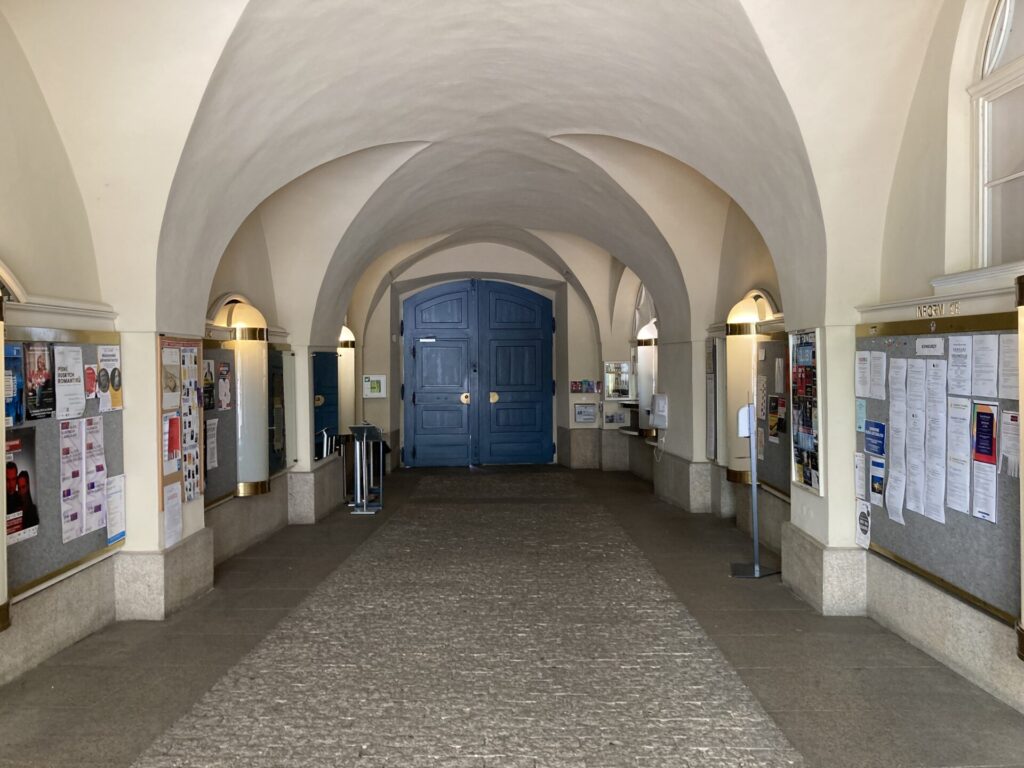
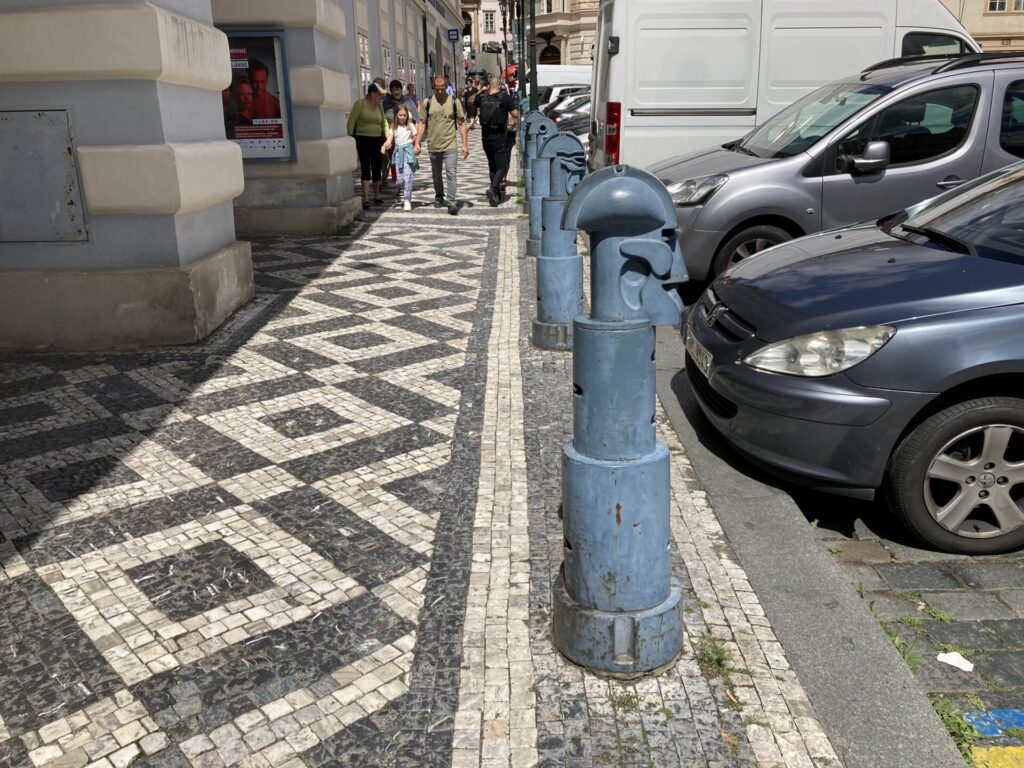
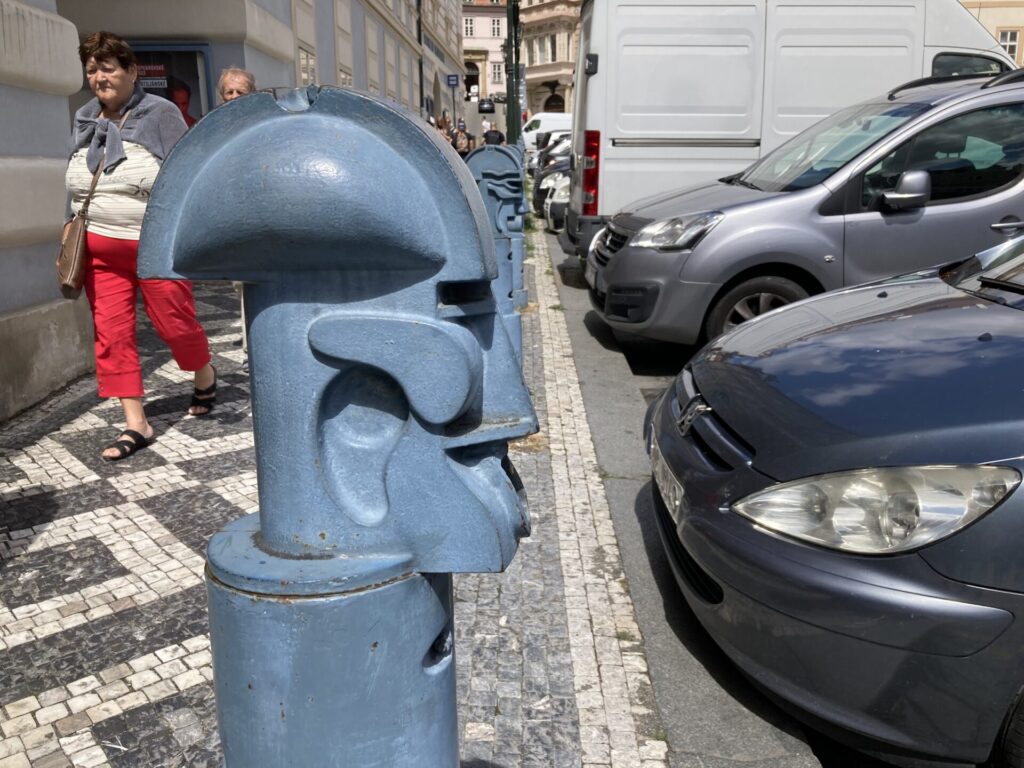
The role of Charles I of Liechtenstein in the story is not interpreted clearly. Historians’ opinions speak in his favor that, at first, he did not envisage capital punishments – the Estates had not rebelled for the first time, and it was common practice to punish them with confiscation of property or fines. According to correspondence between Emperor Ferdinand II and Charles I, the prince tried to mitigate the punishments, but the emperor refused.
On the other hand, historian Petr Hora – Hořejš has a clear opinion about him in his book Toulky českou minulostí (Wanderings in the Czech Past): “He became famous as the merciless head of the post-White Mountain tribunal, as a gangster who became fabulously wealthy by managing subsequent confiscations, and thirdly as a financier who, with a group of his equals, consciously brought to the bankruptcy of the state treasury, so that he and his cronies can make a lot of money again for the operation.”
State Bankruptcy and the Fabulous Enrichment of a “Chosen” Group
What happened then? Ferdinand II needed to pay off the army after the Battle of White Mountain, and he also wanted to bring order to the Czech monetary system when there were several types of coins in circulation that were declared the official currency. However, the reasonable intention became a big financial mess with the subsequent currency reform.
Ferdinand decided to lease the mints in the Austrian and Czech lands to a consortium, which would pay him a pre-agreed amount of money for the license. The highest bid was submitted by a consortium of investors led by Dutch banker Hans de Witt, who offered an annual rent of 6.1 million guilders if mints in Bohemia, Moravia, and Austria were leased to him. The consortium was made up of about 15 partners, some of whom were unknown at the time – and among them was Charles I of Liechtenstein. In addition to the lease of the mints, the consortium obtained a one-year monopoly right to mint coins and a right of first refusal at a fixed price for all silver mined in Czech mines.
The Mint Consortium ordered all coins to be replaced with new ones, but they only had a tenth of the silver content. The existing coins were melted down to create a 1:9 alloy with non-precious metals, which was used to mint the new coins. Using the original coins was forbidden, and the “remaining” 9/10 of the silver from the original coins was forfeited to the consortium.
The efforts of the imperial officials to intervene failed – the consortium members were too high-ranking and influential. And to add to the problems, the consortium members used this silver to buy property confiscated after the uprising at a price they set themselves. In the end, state bankruptcy had to be declared on December 28, 1623, which reduced the currency’s value by 80%. The logical consequence was significant inflation and famine.
So Charles’s nickname “Bloody” may come from both – the Old Town execution and the many years of subsequent suffering of the entire Bohemian kingdom.

